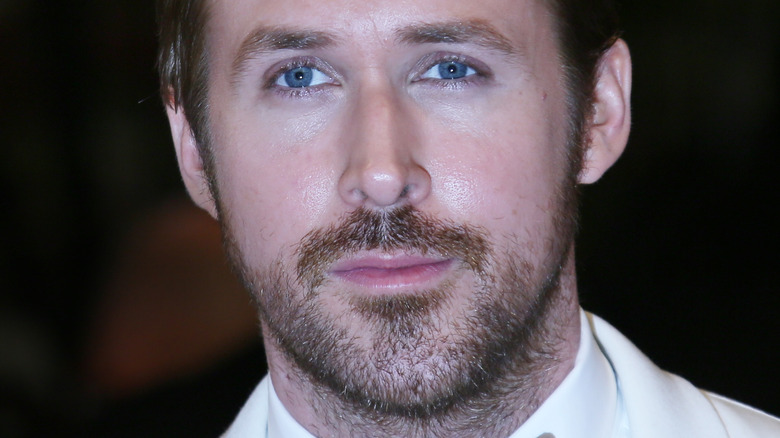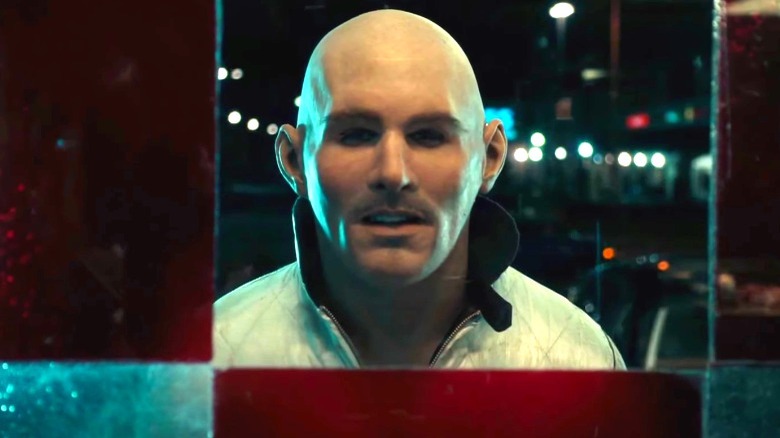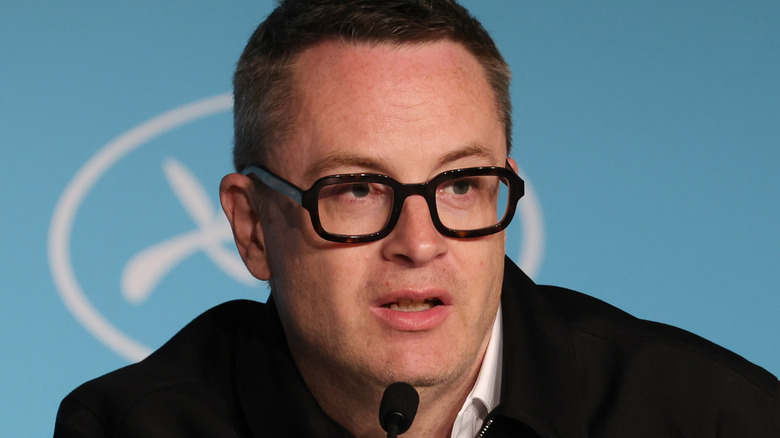The Disturbing Ryan Gosling Scene That Still Haunts Our Dreams
Ryan Gosling is an actor of many talents. After playing creepy loners in movies like "Murder By Numbers," "The United States of Leland," and "The Believer," the performer went on to break out significantly after landing the role of Noah in the beloved romance picture "The Notebook" (via IMDb).
Since then, Gosling has utilized his considerable talent to play a wide range of roles that take advantage of both his likable qualities as well as his more menacing side. These performances run the gamut from a conflicted political staffer in the thriller "The Ides of March" to a foul-mouthed cop in the action-comedy "The Nice Guys." Notably, the performer has also been nominated for the Best Actor Oscar twice for his work in "Half-Nelson" and "La La Land."
However, some of the actor's most interesting roles have come from his work with Danish filmmaker Nicolas Winding Refn. Gosling has worked with the director on two films. These include 2013's "Only God Forgives," and another project that still haunts viewers to this very day.
The masked scene from Drive is totally disturbing
Nicolas Winding Refn's 2011 film "Drive" focuses on an unnamed criminal (Ryan Gosling) who serves as a getaway driver for bank robbers and other underworld figures. The film follows The Driver's quest for revenge after a double-cross leaves him as the lone survivor of a robbery gone wrong. Toward the tail end of the movie, The Driver discovers that his mentor and friend Shannon (Bryan Cranston) has been murdered by a mobster named Bernie Rose (Albert Brooks). Though The Driver eventually goes after Rose, he first sets his sights on the man whose lying and double-dealing caused him so much trouble in the first place, Bernie's former partner-in-crime, Nino (Ron Perlman).
Dawning a terrifyingly creepy mask to disguise his features, The Driver stalks Nino outside of a bar where the latter is laughing and partying, totally unaware of the fact that he's about to be viciously attacked. As the song "Oh My Love" by Riz Ortolani plays hauntingly, The Driver plans his attack and waits for the perfect time to spring, ramming Nino's car off of a deserted highway. The scene ends with The Driver dragging Nino from his car and drowning him in the waves of the ocean while he screams and begs.
Part of what makes this scene in "Drive" so troubling is the cold, unflinching, and calculated nature of the attack. Furthermore, The Driver shows not a single trace of emotion while murdering Nino, making it clear just how cold-blooded and dangerous he truly is. Of course, credit must go to Gosling and Perlman, who succinctly sell the grim terror of the scene. Ultimately, it's the effectiveness of Refn's direction that makes the scene so memorable. Heavily stylized and cut chillingly to the music, this moment in "Drive" is totally unforgettable.
Drive was originally meant to be quite different
Naturally, when it comes to crafting suspenseful, disturbing cinematic works, "Drive" director Nicolas Winding Refn is a well-trained hand. The filmmaker behind such troubling films as "Valhalla Rising," "The Neon Demon," and "Pusher," Refn has made a career out of making audiences cringe and gasp (via IMDb).
Throughout his career, Refn has directed a number of stomach-churning scenes. These include the infamous elevator scene in "Drive," where The Driver stomps the head of a hitman (Jeff Wolfe), and the outrageous cannibalism and necrophilia of "The Neon Demon." Needless to say, Refn is no stranger to getting a strong reaction from viewers, and the writer-director sat down with Complex to talk about his experience making "Drive" with Ryan Gosling.
Apparently, the movie was meant to be quite different when Refn first came upon it. "It was something that people intended to be like The Fast & The Furious, a big action movie of that nature," the filmmaker said. "Neither Ryan or I wanted to do that, but we still wanted to work together." Though the movie certainly isn't a big tentpole like Vin Diesel's franchise, It's great to see that Gosling and Refn could come to an agreement on a movie that left a significant impact on audiences nonetheless.


